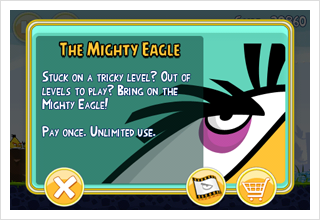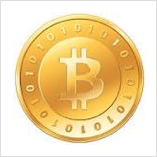Here are a few of the commerce-related items that caught my eye this week.
Report: Don’t rush in-app purchases
 It’s no surprise that app developers are betting on in-app purchases to generate revenue in the year ahead. Last summer, Flurry Analytics was already reporting that in-app purchases accounted for 65% of revenue in Apple’s App Store and last week IHS Screen Digest said it expects to see the same trend across all platforms by 2015.
It’s no surprise that app developers are betting on in-app purchases to generate revenue in the year ahead. Last summer, Flurry Analytics was already reporting that in-app purchases accounted for 65% of revenue in Apple’s App Store and last week IHS Screen Digest said it expects to see the same trend across all platforms by 2015.
Now, developers want to know which users are most likely to make those purchases and who among them are most valuable. Localytics has dug a bit deeper to try to identify successful patterns in the freemium formula, and its findings are interesting and maybe slightly counterintuitive. Long-term engagement is more valuable over time, and it looks like those who engage too quickly are also less likely to stick around. In other words, it’s better to let the hook sink in a bit. Localytics found that users who purchased quickly were less likely to stick with the app: of users who made a purchase on their first use of the app, only 16% go on to engage with the app 10 or more times — significantly lower than the 26% average. On average, users had the app at least 12 days before making a purchase, and 44% of all users who made an in-app purchase did so after interacting with the app at least 10 times.
When I think about mobile games, 12 days feels about right. Remember your second day on “Cut the Rope”? Still playing? It’s fascinating to compare this to the durability of more complex games: “World of Warcraft” holds players for years, and some of us are known to every so often dust off games that are years older. (I’m looking at you, “Call of Duty II.”)
 X.commerce harnesses the technologies of eBay, PayPal and Magento to create the first end-to-end multi-channel commerce technology platform. Our vision is to enable merchants of every size, service providers and developers to thrive in a marketplace where in-store, online, mobile and social selling are all mission critical to business success. Learn more at x.com.
X.commerce harnesses the technologies of eBay, PayPal and Magento to create the first end-to-end multi-channel commerce technology platform. Our vision is to enable merchants of every size, service providers and developers to thrive in a marketplace where in-store, online, mobile and social selling are all mission critical to business success. Learn more at x.com.Bankers show interest in Bitcoin
 Bitcoin is becoming increasingly mainstream — at least awareness of it, if not actual use. In addition to last fall’s New Yorker profile that attempted to identify the real identity of Bitcoin creator Satoshi Nakamoto, a recent episode of the CBS drama “The Good Wife” focused on a court case in which the U.S. government was suing to get one of the attorneys to give up the identity of Bitcoin’s (fictitious) creator.
Bitcoin is becoming increasingly mainstream — at least awareness of it, if not actual use. In addition to last fall’s New Yorker profile that attempted to identify the real identity of Bitcoin creator Satoshi Nakamoto, a recent episode of the CBS drama “The Good Wife” focused on a court case in which the U.S. government was suing to get one of the attorneys to give up the identity of Bitcoin’s (fictitious) creator.
Bankers being who they are, all this attention has led them to wonder (as they do with all things), “How can we profit from this?” A recent article in American Banker attempts to help them through their thinking. After explaining that the digital currency “was conceived as a rebellion against the banking system,” it then goes on to say “it may also present business opportunities for banks that can get comfortable with the risks.” The article does a nice job of laying out the pros (offering exchange services, accepting deposits) and cons (limited growth of the currency by design, slow uptake so far among merchants and consumers).
PayPal expands Home Depot trial
PayPal is expanding its point-of-sale trial at Home Depot. Just a few weeks after announcing a trial at five stores near PayPal’s home base in Silicon Valley, the experiment will scale out to 51 Home Depot stores: one in Atlanta, six in Omaha, and 44 in the San Francisco Bay Area. All are expected to be online by March.
Customers can tap their PayPal accounts for all their DIY needs in a couple ways: swipe a PayPal card (available online) or, if you don’t have one, you can get a pin to accompany your mobile number and use that to draw funds from whatever source your PayPal account is linked to.
Anuj Nayar, PayPal’s chief spokesperson, told American Banker that PayPal needed to ramp up quickly to build momentum — and to meet the company’s predicted $7 billion in mobile transactions this year. Early in 2011, PayPal predicted it would move $1.5 billion through its mobile channels. It didn’t have any trouble beating that number, eventually overseeing nearly $4 billion in transactions by the end of 2011.
Got news?
News tips and suggestions are always welcome, so please send them along.
If you’re interested in learning more about the commerce space, check out DevZone on x.com, a collaboration between O’Reilly and X.commerce.
Related:
